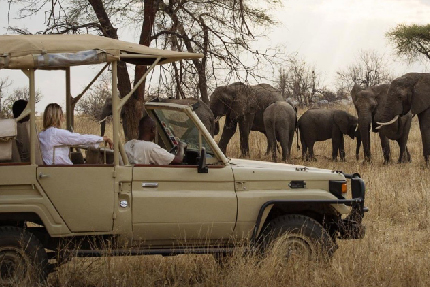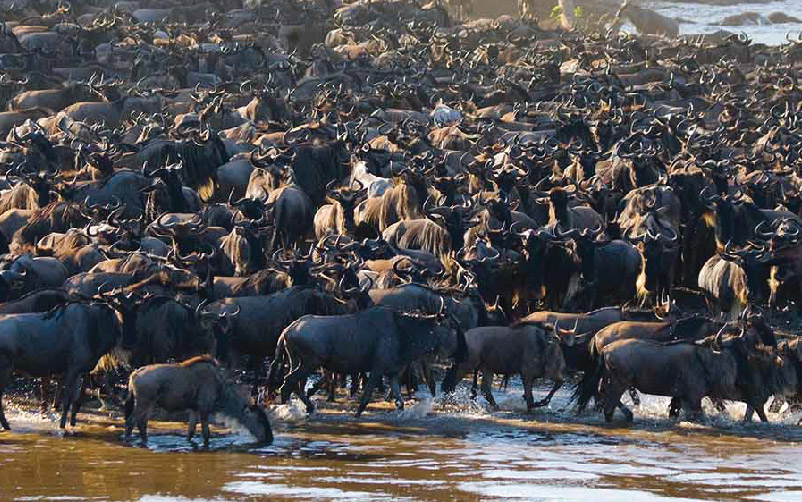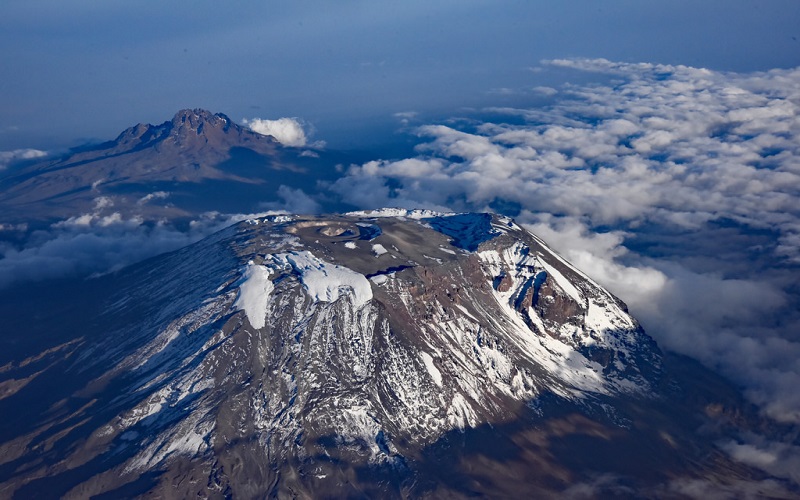Planning a Tanzania safari requires careful consideration of numerous factors that many first-time visitors overlook. After organizing hundreds of safaris across Tanzania's national parks, we've identified seven critical planning errors that can significantly impact your wildlife experience.
This guide provides detailed solutions to help you avoid these common pitfalls when visiting Serengeti, Ngorongoro Crater, Tarangire, and other iconic Tanzanian destinations.
Mistake 1: Selecting the Wrong Season for Your Safari Goals
One of the most frequent errors safari planners make is choosing travel dates without considering how seasonal variations affect wildlife behavior and viewing conditions. Tanzania experiences distinct dry and wet seasons that dramatically transform the landscape and animal movements.
The dry season from June to October offers excellent wildlife viewing as animals congregate around limited water sources. This period is particularly good for spotting predators and witnessing the Great Migration river crossings in the northern Serengeti. However, these popular months also bring larger crowds and higher prices at lodges and camps.
Contrary to popular belief, the green season from November to May presents unique advantages. The landscape becomes lush and vibrant, perfect for photography, while many animals give birth to their young. Birdwatchers will find this period ideal as migratory species arrive. The trade-off includes potentially challenging road conditions and animals being more dispersed across the parks.
Solution: Match Your Travel Dates to Specific Wildlife Events
- For the dramatic river crossings of the Great Migration, plan for July through August in the northern Serengeti
- To see newborn animals and predator action, visit the southern Serengeti in January or February
- Bird enthusiasts should target November through April when migratory species are present
- Budget-conscious travelers will find better value during the April-May shoulder season
Mistake 2: Underestimating the Total Safari Budget
Many safari-goers focus solely on the base tour price while overlooking additional expenses that can substantially increase the total cost. A comprehensive budget should account for international flights, park fees, domestic transfers, tips, and unexpected costs.
| Budget Category | Budget Safari | Mid-Range Safari | Luxury Safari |
|---|---|---|---|
| Daily Rate (per person) | $150-$300 | $300-$600 | $600-$1,500+ |
| Park Fees (daily) | $70-$100 | $70-$100 | $70-$100 |
| International Flights | $800-$1,500 | $800-$1,500 | $800-$1,500 |
| Domestic Flights | $0 (road transfers) | $200-$400 | $400-$800 |
| Tips & Extras | $10-$20/day | $20-$40/day | $50-$100/day |
Park fees in Tanzania often surprise first-time visitors, ranging from $70 to $100 per person per day depending on the conservation area. These mandatory fees are rarely included in advertised safari prices. Domestic flights between parks can add several hundred dollars to your budget, though they save valuable time compared to road transfers.
Solution: Create a Comprehensive Budget Breakdown
- Start with the base safari cost multiplied by your number of travel days
- Add $70-100 per day for national park entry fees
- Include international flight estimates (typically $800-$1,500 from North America/Europe)
- Account for domestic transfers (15-20% of base safari cost)
- Budget 10% for tips and incidental expenses
- Add a $500 buffer for unexpected costs
Mistake 3: Choosing Parks Based on Popularity Rather Than Interests
Tanzania offers two primary safari circuits - the well-known northern route and the less-traveled southern parks. Each provides distinct experiences that many travelers select without considering their personal preferences.
The northern circuit including Serengeti, Ngorongoro, and Tarangire delivers reliable wildlife sightings and excellent infrastructure. However, these popular parks can feel crowded during peak seasons. The southern circuit featuring Ruaha and Selous offers more secluded wilderness experiences but requires longer travel times between locations.
First-time visitors often make the mistake of trying to cover too many parks in a limited timeframe. This results in excessive travel days and reduced time for actual wildlife viewing. Each park has unique ecosystems that deserve proper exploration rather than rushed checklists.
Solution: Select Parks Based on Your Priorities
- First-time visitors should focus on the northern circuit with 5-7 days minimum
- Return visitors looking for new experiences should explore southern parks like Ruaha
- Birdwatchers will find Lake Manyara and Tarangire particularly rewarding
- Photographers should allocate more time in Serengeti and Ngorongoro for diversity
- Budget travelers can enjoy excellent wildlife viewing in Tarangire and Manyara
Mistake 4: Improper Packing for Safari Conditions
Many travelers either overpack unnecessary items or forget essential gear that can make or break their safari experience. The unique conditions of game drives - early morning chill, midday heat, and pervasive dust - require thoughtful preparation.
Common packing mistakes include bringing bright-colored clothing that disturbs wildlife, forgetting sun protection essentials, or neglecting proper camera equipment protection. Many first-time safari-goers are surprised by how cold morning game drives can be, even in warm climates, while others underestimate the intensity of the equatorial sun.
| Category | Essential Items | Common Mistakes |
|---|---|---|
| Clothing | Neutral colors, layers, wide-brimmed hat | Bright colors, camouflage patterns, single-season outfits |
| Gear | Binoculars, camera with zoom lens, dust bags | No optical gear, unprotected electronics |
| Health | Malaria prophylaxis, sunscreen, insect repellent | No medical preparations, inadequate sun protection |
| Documents | Passport, visas, vaccination certificates | No copies, missing yellow fever certificate |

Solution: Smart Packing Strategy
Pack 5 tops, 3 bottoms plus layers for temperature changes
Bring camera with 200mm+ lens and dust protection
Include comprehensive medical kit and prescriptions
Organize all documents in waterproof case with copies
Mistake 5: Underestimating Travel Times Between Parks
Tanzania's vast wilderness areas require significant travel time that many itineraries don't adequately account for. Road conditions vary greatly between paved highways and rough park tracks, making estimated arrival times unpredictable.
The drive from Arusha to Serengeti can take 8+ hours depending on stops and wildlife sightings along the way. Many travelers mistakenly schedule international flights too close to their safari start/end dates without allowing for these transit times.
Solution: Realistic Travel Planning
- Limit to 2-3 parks for a 7-10 day safari to minimize transit days
- Consider domestic flights between distant locations (but check luggage limits)
- Schedule international flights with buffer days before/after safari
- Account for wildlife viewing opportunities during transfers
- Verify road conditions with your operator during rainy seasons
Mistake 6: Choosing the Wrong Accommodation Type
Selecting lodges based solely on price or luxury level without considering location can significantly impact your wildlife experience. Many travelers don't realize that being inside a park versus outside the gates affects both game viewing opportunities and overall safari atmosphere.
Permanent lodges offer more amenities but are often situated outside park boundaries, requiring daily drives to reach prime viewing areas. Tented camps provide more authentic experiences and better locations but with fewer comforts. Luxury camps combine the best of both but at premium prices.
Solution: Strategic Accommodation Selection
For prime wildlife access: Choose camps inside the parks
For budget travelers: Lodges outside park gates offer best value
For families: Larger lodges with pools and activities
For photographers: Mobile camps that follow wildlife movements

Mistake 7: Neglecting Health and Safety Preparations
Many travelers focus so much on wildlife viewing that they overlook crucial health and safety considerations. Tanzania presents unique health challenges that require advance preparation, from malaria prophylaxis to water safety and sun protection.
Common oversights include not checking vaccination requirements, forgetting to pack a comprehensive first aid kit, or not arranging proper travel insurance that covers medical evacuation from remote areas. Many visitors also underestimate the intensity of the African sun and the need for constant hydration.
Solution: Comprehensive Health Preparation
| Timeframe | Action Items |
|---|---|
| 6-8 weeks before | Visit travel clinic for vaccinations and malaria prophylaxis |
| 4 weeks before | Purchase travel insurance with medical evacuation coverage |
| 2 weeks before | Prepare first aid kit and gather prescription medications |
| 1 week before | Confirm all documents (passport, visas, certificates) |
| Day of travel | Pack health essentials in carry-on, including motion sickness remedies |
Ready to Plan Your Perfect Safari?
Our safari specialists can help you avoid all these common mistakes while creating an itinerary tailored to your interests, budget and travel style.




